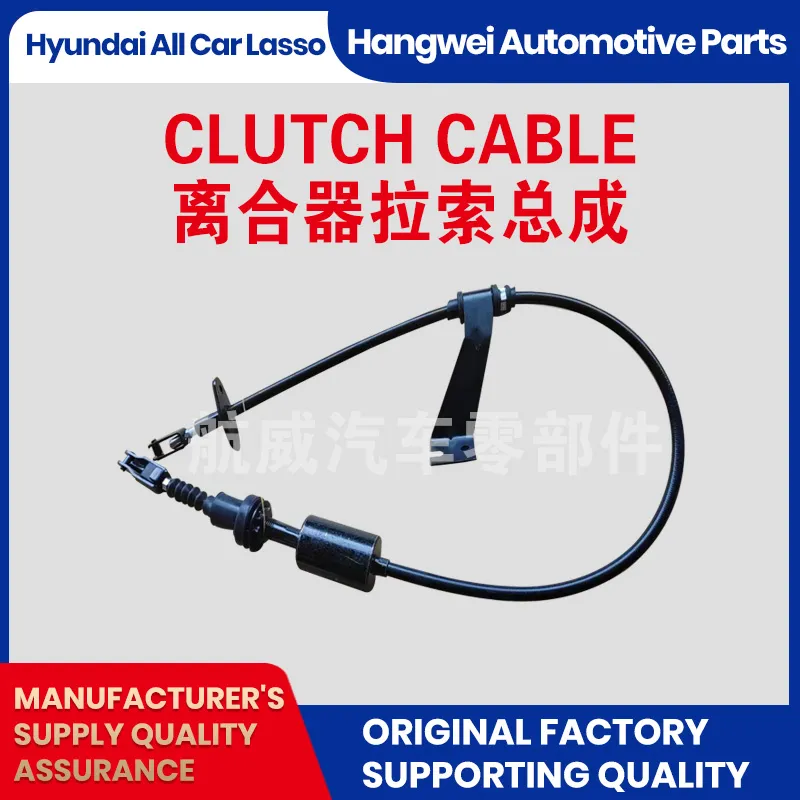High-Quality Clutch Line Solutions for Reliable Performance
The clutch line is a vital and often underestimated component in automotive and industrial power transmission systems. Whether in passenger vehicles, heavy machinery, or automation equipment, a reliable and high-performing clutch line —alternatively known as clutch hose, clutch cable assembly, slave cylinder line, cable assy clutch, line shaft clutch, linea clutch, or master cylinder clutch line—delivers precise actuation, operational longevity, and resilience against extreme operational stress.
In 2023, the global automotive clutch market was valued at $10.5 billion, with the clutch line sub-sector showing a CAGR of 6.2% (MarketsandMarkets). Advanced composite materials, rigorous ISO/ANSI compliance, and increasing demand for maintenance-free, corrosion-resistant solutions are driving innovation in this segment.

Next-generation clutch line solutions are engineered for the most challenging applications—ranging from harsh industrial zones to high-performance vehicles. Here is a data-driven overview of typical clutch actuation solutions:
| Product Category | Material | Burst Pressure (MPa) | Operating Temp (°C) | Outer Diameter (mm) | Standard | Typical Application |
|---|---|---|---|---|---|---|
| Clutch Line | PTFE/Stainless Steel | 18-22 | -40 ~ 150 | 5.5–10 | ISO/TS 16949 | Automobile Transmission |
| Clutch Hose | Rubber/EPDM | 8–16 | -35 ~ 125 | 8–12 | SAE J1401 | Light, Medium Vehicles |
| Clutch Cable Assembly | High Tensile Steel | n/a | -40 ~ 100 | 6–9 | ANSI B92 | Industrial Automation |
| Slave Cylinder Line | Stainless Steel/Brass | 18–20 | -30 ~ 150 | 6–8 | ISO 9001 | Heavy Duty, Trucks |
| Master Cylinder Clutch Line | PA12/Steel Braided | 19–23 | -35 ~ 145 | 7–9 | FMVSS 106 | Agricultural Machinery |
Clutch Push-Pull Cable (Product Details) represents the next generation of clutch actuation. Its production involves advanced metallurgy, precision engineering, and stringent quality assurance.

- Raw Material Selection: High-tensile galvanized steel wire/SS + engineering plastics.
- Stranding, Swaging & Forming: Multi-core wires precision stranded; end yokes via CNC machining.
- Outer Coating & Lining: HDPE/PU sheathing extruded for heat/abrasion protection.
- Assembly & Fitting: Cable sheath, end caps, adjustment nuts installed and laser welded.
- Inspection & Testing: 100% tested for tensile, fatigue, deflection; ISO 9001/14001 standards.
Every phase follows strict ISO/IEC 17025 laboratory and ISO/TS 16949 automotive quality frameworks, with both destructive and non-destructive testing. Final QC includes salt spray, cycle life (>1 million cycles), and dimensional audit.
- Core Wire: High-tensile spring steel, galvanized for ruggedness; typical breaking load: 1600N+
- Sheath/Outer Layer: Nylon HDPE/PU (polyurethane) with embedded anti-corrosion treatments
- End Fittings: Precision CNC-milled steel/end eyelets (optional: stainless or brass for marine/chemical)
- Flex Cycle Life: Laboratory tested to >1,020,000 actuation cycles
- Thermal Resistance: Rated for continuous -40° to 145°C
- Fluid Compatibility: Full resistance to DOT 3/4/5.1 brake fluid, mineral oils
- Compliance: ISO/TS 16949, ANSI B92, RoHS, REACH
- Typical Service Life: 7~10 years or 300,000+ clutch operations
Choosing the right clutch line partner means focusing on product consistency, rigorous ISO/ANSI adherence, customization options, and support depth.
| Brand/Manufacturer | Material (Core/Sheath) | Cycle Life (×103) | Certification | Customization | Global OEM Use |
|---|---|---|---|---|---|
| HWEI Cable Clutch Push-Pull Cable |
Galvanized Steel / HDPE | 1020+ | ISO/TS 16949 RoHS |
√ (Full ODM/OEM) | • |
| KAIFA Tech | Stainless Steel / Nylon 12 | 900 | ISO 9001 | △ (Limited) | • |
| BOWDEN | High Carbon Steel / EPDM | 800 | SAE J1401 | — | ○ |
| KOYO OE Parts | Alloy Steel / TPU | 820 | ISO 9001 | — | ○ |
- Dimensional Customization: Cable length, sheath color, end style
- Performance Grading: Heat, rust, and chemical resistance up to user’s demand
- Assemblies: Integration with master/slave cylinder clutch line, auto connectors, or sensor harness
- Rapid Prototyping: Sample lead time 10–14 days; mass order 3–5 weeks
- Technical Support: Installation guides, on-site training, and after-sales support
- Warranty: 2 years standard, extendable to 5 years for OEM projects
- QC & Traceability: Full process barcoding and batch archiving
- Automotive OEM: HYUNDAI, Geely, Tata—long-life clutch line boosts transmission efficiency and reduces premature wear
- Chemical/Marine: Stainless cable assy clutch, with sealed ends. Survives >2,000h salt spray test (per ISO 9227)
- Mining & Metallurgy: Advance line shaft clutch with extra abrasion coating for 24/7 operation
- Agritech: Customized master cylinder clutch line for robotic tractor deployment
- City Buses/Metro: Pre-bent and color coded for error-proof assembly
- Lead Time: Samples: 7-14 days; Batch orders: 3-5 weeks
- Certification: Full ISO, RoHS, and environmental compliance
- Warranty: Standard 2 years; extended to 5 with OEM contract
- Support: 24/7 technical hotline, on-site training, digital manuals
- Traceability: Each clutch line with batch barcode, digital QA archive
The role of a robust clutch line ecosystem is crucial for both industrial productivity and automotive performance. State-of-the-art solutions like Clutch Push-Pull Cable offer next-level durability, operational excellence, and customizability.
Industry forums and technical journals offer further insight:
[2] Autosport Engineering Forum: PTFE vs OEM Clutch Line Performance (2023)
[3] MarketsandMarkets: Global Automotive Clutch Market Report (2023)
[4] ResearchGate: Materials Selection for Enhanced Clutch Cable Performance (2021)
-
Clutch Line: Braided, Leak-Proof, OEM-Grade PerformanceNewsNov.10,2025
-
Throttle Cable: Durable, Smooth Control & Universal FitNewsNov.10,2025
-
Throttle Cable: Durable, Smooth, Universal Fit, Easy InstallNewsNov.10,2025
-
Clutch Line: Durable, Leak-Proof, OEM-Grade PerformanceNewsNov.10,2025
-
Hand Brake Cable | Custom, Universal & Trailer SolutionsNewsNov.10,2025
-
Clutch Line: High-Pressure, OEM-Fit, Corrosion-ResistantNewsNov.03,2025
